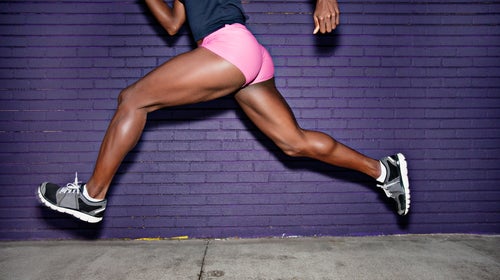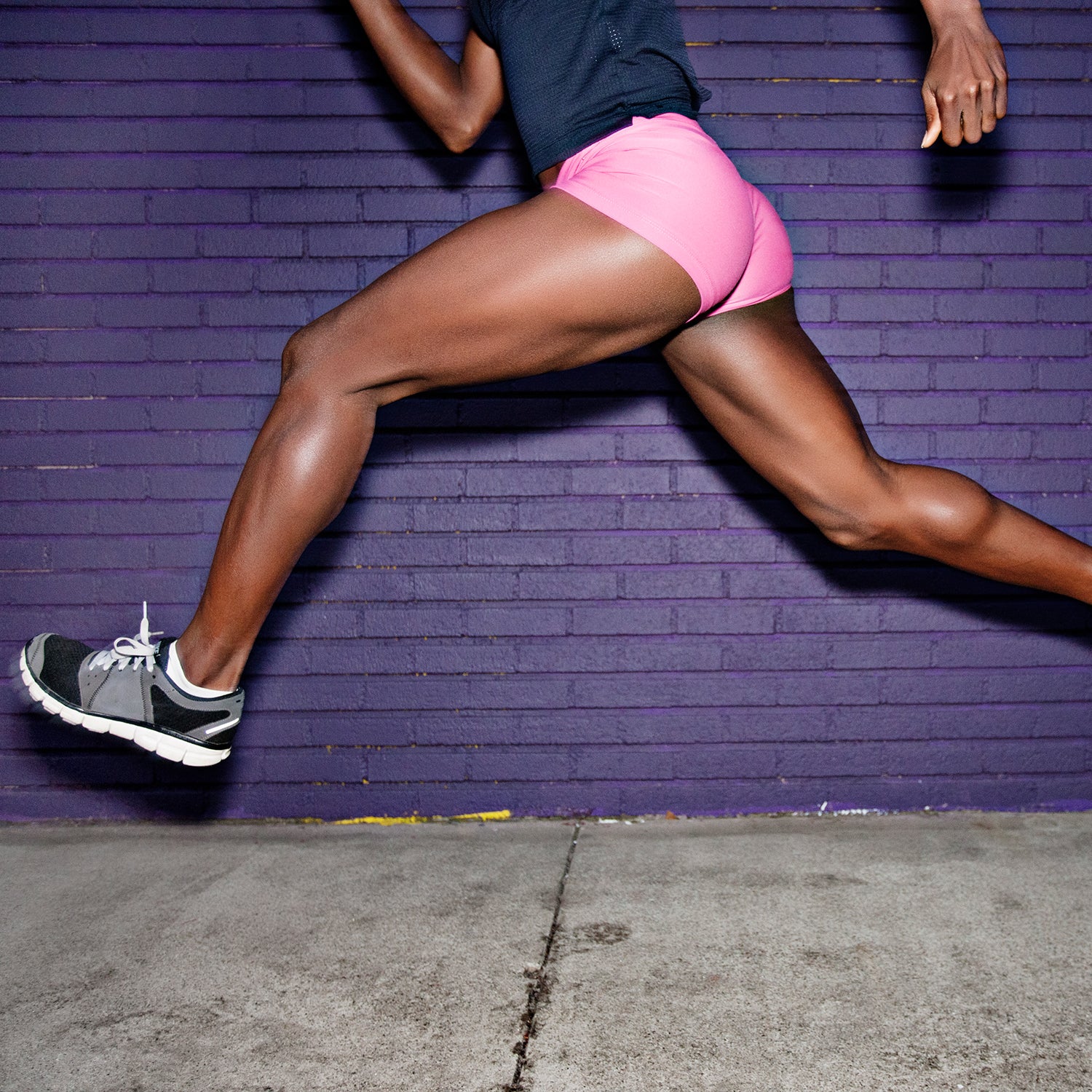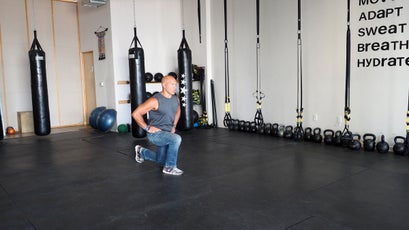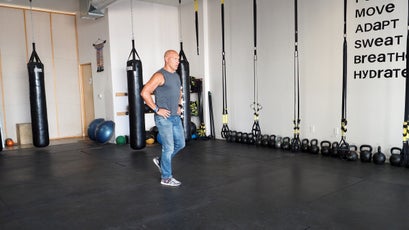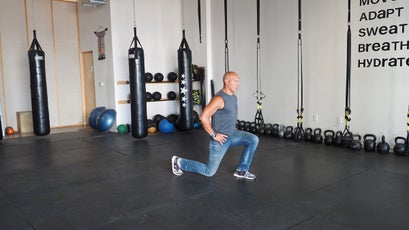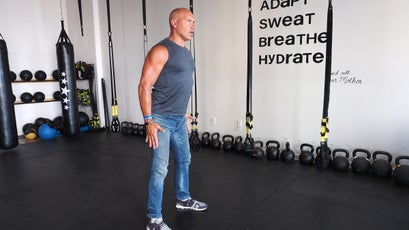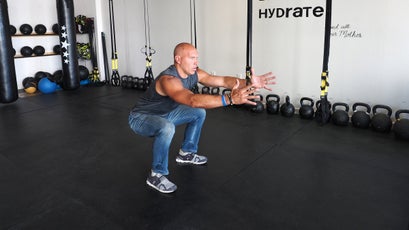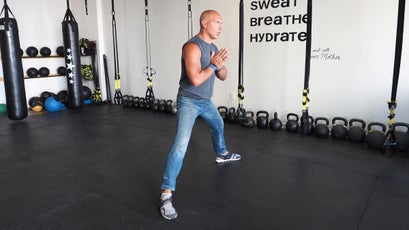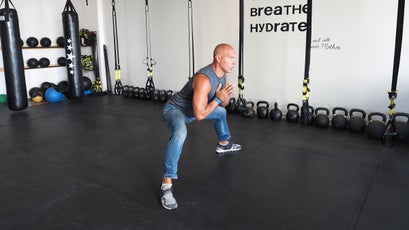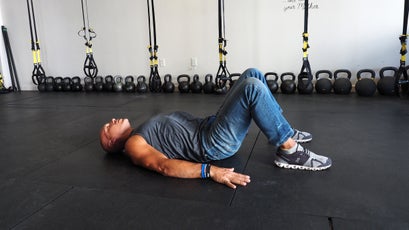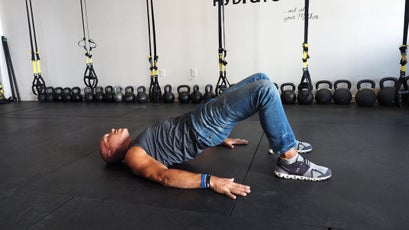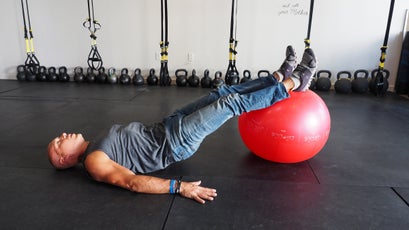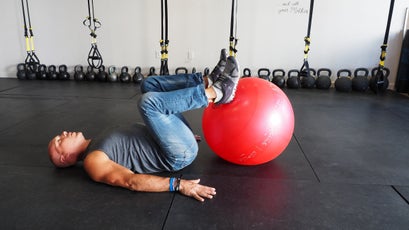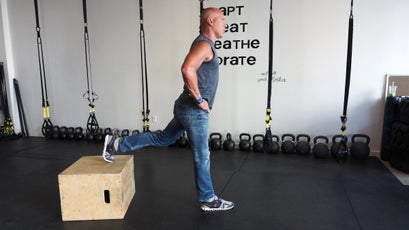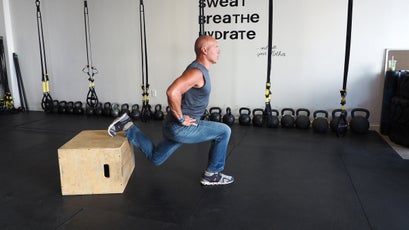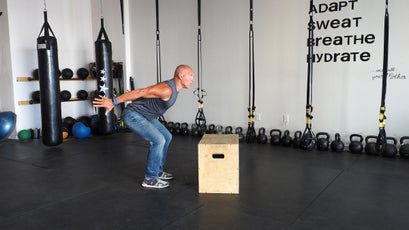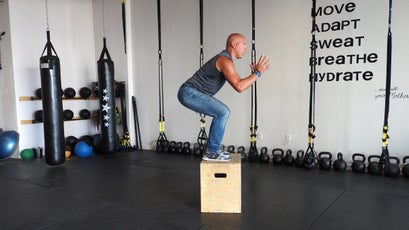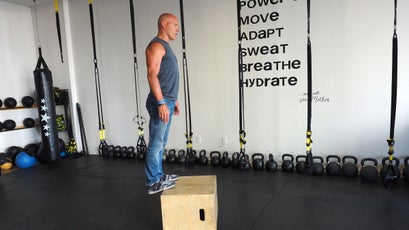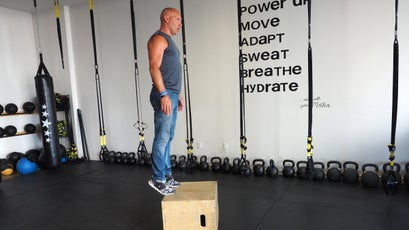Forget fancy equipmentÔÇöin the mountains, your legs are your greatest tools. Not only does functional leg strength improve your performance and durability across all mountain sports, it also provides a greater margin of safety, since youÔÇÖll have the reserves and stability to beat a storm or bail when things go south.
The exercises below come recommended by Doug Lawder, a personal trainer of 27 years and the owner of in Santa Fe. They┬áhit all of the major muscle groups in the lower bodyÔÇöquadriceps, glutei┬ámaximi, hamstrings,┬áhip flexors, and┬ácalvesÔÇöas well as the smaller, stabilizing muscles in between.
Add these to your routine, or complete this workout on its own as a circuit, moving from one exercise to the next, with a minute or two of rest between each exercise and five minutes of rest between each set. For the first round, do each exercise for 30 to 60 seconds using lighter weights (if applicable) and a moderate range of motion to increase your heart rate, get the blood pumping, and warm up your joints and muscles. Then do two to three more sets of 10 to 15 reps with a full range of motion. Focus on form and control rather than quantity of reps.
For each exercise, keep your core engaged to protect your spine, and pay attention to your breathing. Exhale during the concentric muscle phase (when your muscles contract under load), and inhale during the eccentric phase (when your muscles elongate under load). For example, when doing a squat, breathe in when you lower yourself, and breathe out when you stand up.
Walking Forward Lunge
What it does: Strengthens the quads, hamstrings, and glutes, and trains balance.
How to do it: Stand tall with your feet hip-width apart. Place your hands on your hips, or hold your arms out to each side for better balance. Engage your core. Take an exaggerated step forward (about two feet), then sink your hips until your front thigh is parallel to the ground┬áor as deep as you can lower comfortably. Your rear knee should not touch the ground. Be mindful that your front knee doesnÔÇÖt move beyond┬áyour toes┬áand that your knees donÔÇÖt collapse inward as you move. (Each of these┬ámovement patterns is correlated with knee pain.) From here, push with both legs, and bring the rear leg forward to meet the other, then step it forward so youÔÇÖre alternating legs each step.
Progress by holding a dumbbell on each side.
Reps: 10 to 15 on each leg
Air Squat
What it does: Strengthens the glutes, quads, hamstrings, hip flexors, and calves, as well as the core.
How to do it: Stand tall with your feet hip-width apart┬áand your toes facing forward or slightly out to the sides. Hold your chest and head high, pull your shoulders back and down, and engage your core muscles. Then hinge at the knees and tilt your pelvis to stick out your butt, like youÔÇÖre sitting in a chair. Hold your arms out in front of you for counterbalance┬áif needed. Continue lowering until your knees are bent to around 90 degrees, or go lower if you have the hip mobility and can maintain good form. Keep your back straight and push through your heels to stand up, for one repetition.
If your knees cave in during the squat, place a looped resistance band just above them, and consciously drive them out against the band. This will engage the hip-abductor muscles to train correct knee position and stability, which can help prevent knee pain.
To increase the challenge, hold dumbbells on each side.
Reps: 10 to 15
Sumo Squat
What it does: This strengthens the same muscles as the air squat but better isolates the often overlooked adductor muscles in your inner thighs. It also can be easier for those who have knee pain or a limited range of motion in the hips or ankles. Since the two versions of the squat put an emphasis on different muscle groups, both are valuable in any lower-body strength routine.
How to do it: Do a squat as described above but with your feet in a wide stance (two to three feet apart) and your toes angled out to about 45 degrees.
For added difficulty, hold a kettlebell or dumbbells with straight arms between your legs.
Reps: 10 to 15
Hip Bridge
What it does: Strengthens the glutes, hamstrings, and lower back.
How to do it: Lie on your back, with your feet flat on the floor, hip-width apart. Place your arms at your sides, palms down, for support. Engage your abs, and squeeze your glutes as you press down through your heels to lift your hips off the floor. Continue pushing your hips higher until your knees reach a 90-degree bend or as high as you can go comfortably. Slowly lower your hips to just above the floor for one repetition. Repeat.
Progress the exercise by lifting one foot off the ground an inch and pushing down solely with the opposite leg. Alternate reps.
Reps: 10 to 15 (on each side if applicable)
Hamstring Curl with Exercise Ball
What it does: Targets the hamstrings and glutes, as well as the lower back, abs, and hip flexors.
How to do it: Lie on your back, with your heels on top of an exercise ball. Place your arms along your sides, palms down, for support. Engage your core and glutes to raise your hips off the floor so your body forms a straight line from your heels to your shoulders. From here, contract your hamstrings, bend your knees, and pull with your heels to roll the ball toward your butt. Continue to press your hips toward the ceiling. Slowly reverse the movement back to the plank position for one repetition. Repeat.
ÔÇťWith this exercise, the quads often want to take over and compensate for the hamstrings,ÔÇŁ says Lawder, ÔÇťso focus on the target groupÔÇöthe hamstringsÔÇöfor proper form.ÔÇŁ
Increase the challenge by eliminating the use of one leg. Begin as you would with two legs, but┬áonce youÔÇÖve raised your hips into the plank position, lift one leg off the ball, then perform the hamstring curl with the opposite leg only. Complete all reps on one side, then switch and repeat on the other side.
Reps: 10 to 15 (on each side if performing one-legged curls)
Single-Leg Split Squat (Bulgarian Split Squat)
What it does: Primarily targets the quads and glutes, and also engages the hamstrings, calves, hip adductors (inner thigh), and core muscles.
How to do it: Stand approximately two feet in front of a bench or a box (midshin to knee height), facing away from it, with your arms at your sides. Extend one leg behind you, and place the top of your foot on the bench, with the sole of your foot pointing directly back. Hold your chest and head high, pull your shoulders back and down, and engage your core muscles. Then bend your front knee to slowly sink into a squat until your rear knee nearly touches the ground (or go as far as your hip flexors allow). Push back to the starting position for one repetition. Complete all reps on one leg, then switch. Make it harder by holding dumbbells.
Reps: 10 to 15 on each leg
Box Jump
What it does: Strengthens and builds explosive power in the quads, glutes, hamstrings, calves, and core.
How to do it: Stand facing a box with your feet hip-width apart. Start with a short box and work toward┬ámore height. Engage your core, lower into a half squat, and tilt your torso forward slightly. Extend your arms behind you, then swing them forward for momentum as you jump and land on the box. The entire length of your feet should be on the boxÔÇöif youÔÇÖre landing on┬ájust your forefeet, use a shorter box. From here, step down from the box for your first go-around. As you get more comfortable with the exercise, jump backward┬áand down to return to the starting position┬áfor one repetition.┬áTry to land as quietly as possible; using your leg muscles to absorb the impact is better training, and it places less stress on your joints.┬á
Reps: 10 to 15
Calf Raise
What it does: Strengthens the calves in isolation.
How to do it: Stand on flat ground or on the balls of your feet with your heels hanging off a step. Hold onto a wall or doorframe for balance if necessary, but donÔÇÖt use your hands for upward assistance. Engage your calves, and press through your toes to lift your heels as high as you can. Then slowly lower your heels back to the starting position for one repetition. If youÔÇÖre using a step, move through a complete range of motion with your heels┬áfrom as low as you can go to as high as you can go.
Increase difficulty by holding a dumbbell in each hand or working up to single-leg calf raises.
Reps: 10 to 15 (on each side if applicable)
